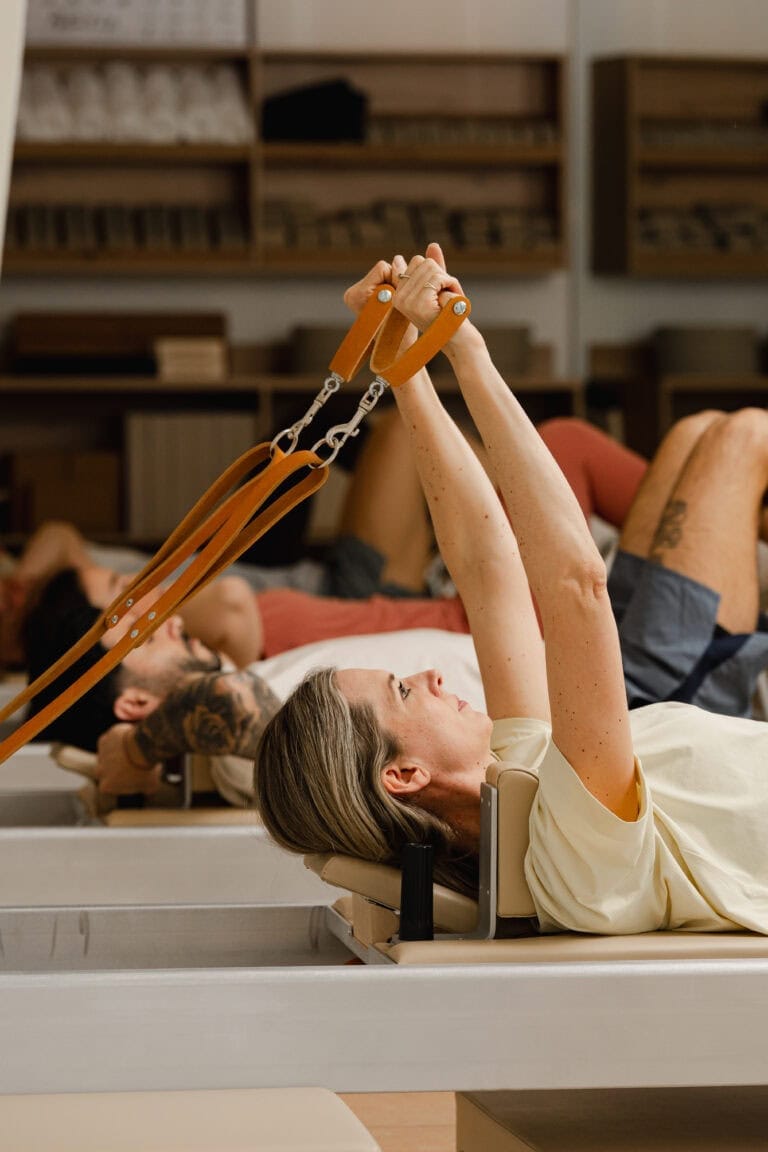‘After ten sessions you will feel the difference, after twenty sessions you will see the difference and after thirty sessions you will have a whole new body.’
Joseph Pilates
Pilates is a method that was developed around 1910-1920 by Joseph Pilates. Pilates, who suffered from asthma, rheumatism and rickets as a child but nevertheless practiced gymnastics intensively, is the founder and inventor of the exercise method ‘Art of Contrology’.
During the First World War he teaches his fellow prisoners his exercise method and it turns out that they are remarkably fit and less susceptible to diseases.
The method is aimed at improving or promoting flexibility, coordination, balance, strength and tone (natural muscle tension) of the muscles.
It ensures strong and long muscles, a better posture, a better balance and it brings body and mind together.
The ability to concentrate will also improve and any stress can be reduced.
It is therefore both a physical and mental training.
Pilates is absolutely good for every body and mind and can be combined with any other form of exercise.
During a Pilates lesson you perform a series of exercises, possibly using special accessories. Each exercise aims to lengthen and strengthen the muscles, loosen the joints and relax the body.
There are exercises for on the mat and there are exercises on equipment. In addition, there are many props and accessories that can be worked with.
All basic exercises are aimed at flexibility and strengthening the abdominal muscles and are easy to perform under supervision.
Breathing is extremely important here, this is also an essential part of the Pilates method. Each series of exercises has its own breathing pattern.
The 6 basic principles within the classical Pilates method:
Centering – You move from the center of your body, also called the ‘Powerhouse’. From there there are two important straight lines, from shoulder to shoulder and from hip to hip. This area is also called the ‘Frame’ or the ‘Box’, it centers and stabilizes the entire body with all movements.
Concentration – The exercises are always performed very consciously and controlled from the mind, not the other way around. There are six aspects of the mind that can be added to the exercise series, namely; imagination, intuition, integration, memory, intelligence and willpower.
Control – Controlled movement, from the centre of your body and with full concentration. Also called ‘The Art of Contrology’.
Precision – All exercises from the classical Pilates method have a very precise goal in mind. This requires attention and precision. The exercises have a clear structure, a precise form and optimal dynamics.
Breathing – The method is designed using the rhythm of breathing and heartbeat.
Flow – The entire series is a flowing sequence of exercises performed with powerful and energetic dynamics.

In the meantime, more modern variations of Pilates have emerged. Many people are not familiar with the classical Pilates method, but are familiar with Pilates as a powerful but calm sports lesson, in which you perform the exercises more slowly and therefore, if done properly, more controlled than perhaps in another type of fitness lesson.
There are also increasingly combination lessons to follow, in which influences from, for example, yoga or ballet are added to the classical Pilates lesson.
What makes these lessons fun is that you often see the instructor’s own style reflected in them, because the instructor adheres less to the classical exercise series in these lessons.
